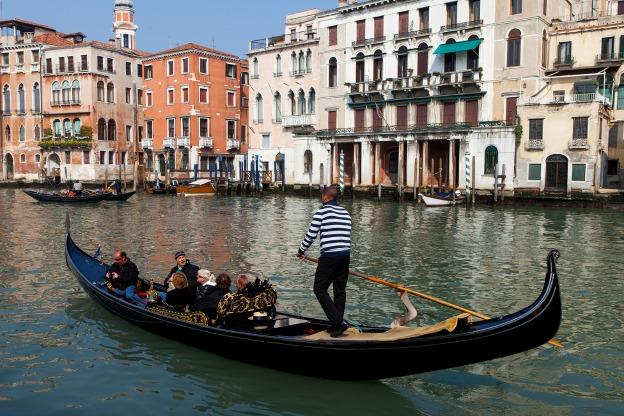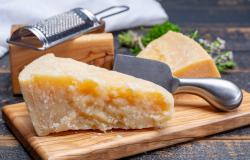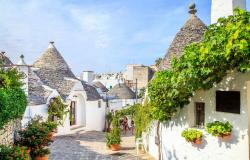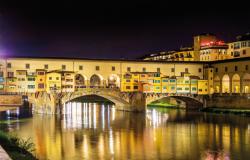History of the Gondola
ITA:

In the rich Republic of Venice of the 16th century, boats of all kinds glided along the canals: batelas, caorlinas, galleys, gondolas…
Gondolas, for centuries the main means of transport and today the iconic symbol of Venice, looked different from how they do today. Paintings by Canaletto and other Venetian painters show a lower prow, a higher “ferro” (the ornament on the front), and usually two rowers.
Gondolas were luxury boats, coveted by the wealthy who competed among themselves to make them ever more beautiful and lavish, equipping them with precious materials and various expensive frills. This was true until 1562, when the Senate issued a law aimed at restraining squandering and wealth ostentation by mandating that all gondolas be black and bare.
Venetian gondolas were made in specific workshops called “squeri” (singular “squero”). These were led by talented artisans who employed eight different types of wood depending on the component the wood was meant for: oak for the supporting structures, larch and fir for the parts touching the water, etc.
The most important piece of the gondola is the forcola (oarlock): that object supporting the oar, which is what keeps the gondolier balanced. The gondolier maneuvers the oar positioned on the forcola according to what it needs the boat to do: slow forward rowing, powerful forward rowing, turning, slowing down, rowing backwards, and stopping.
The ornament on the front is called fèrro; it serves the double purpose of decoration and counterweight for the gondolier standing at the rear of the gondola.
Have you ever wondered why gondolas do not overturn despite the fact that the gondolier stands on one side? And why is it that they do not turn on themselves despite the fact that the gondolier always rows on the same side? It is because these boats are asymmetrical and slightly lean to the right. The weight of the gondolier makes them stable – in fact each gondola is different from the others because it is built according to the body of each individual gondolier (just like the forcola) – and the strokes make them go straight exactly because they are asymmetrical.
It is estimated that there were between 8,000 and 10,000 gondolas during the 17th and 18th centuries. There are just over four hundred in service today, almost all of them used to carry tourists on canal rides. They are also used in special regattas (rowing races) held among gondoliers.
Nella ricca Repubblica di Venezia del 16° secolo, imbarcazioni di ogni tipo scivolavano lungo i canali: batele, caorline, galee, gondole ...
Le gondole, per secoli il principale mezzo di trasporto e oggi il simbolo di Venezia, apparivano diverse da come sono oggi. Quadri di Canaletto e di altri pittori veneziani mostrano una prua più bassa, un “ferro” (l'ornamento sulla parte anteriore) più alto, e solitamente due vogatori.
Le gondole erano imbarcazioni di lusso, ambite dai ricchi che gareggiavano tra loro per renderle sempre più belle e lussuose, dotandole di materiali preziosi e vari orpelli costosi. Fu così fino al 1562, quando il Senato emanò una legge volta a frenare lo sperpero e l’ostentazione della ricchezza stabilendo che tutte le gondole fossero nere e spoglie.
Le gondole veneziane erano costruite in laboratori specifici chiamati “squeri” (singolare “squero”). Questi erano guidati da artigiani di talento che impiegavano otto diversi tipi di legno a seconda del componente: la quercia per la strutture portanti, il larice e l’abete per le parti che toccavano l'acqua, ecc.
Il pezzo più importante della gondola è la forcola: quell'oggetto che sostiene il remo, che è ciò che mantiene il gondoliere in equilibrio. Il gondoliere manovra il remo posizionato sulla forcola a seconda di come vuole muovere la barca: per remare in avanti, lentamente o con forza, per girare, rallentare, andare indietro, o fermarsi.
L'ornamento a prua si chiama “ferro”; serve il duplice scopo di decorazione e contrappeso al gondoliere che sta in piedi sul retro della gondola.
Vi siete mai chiesti perché le gondole non si capovolgano nonostante il fatto che il gondoliere si trovi su un lato? E perché non girano su se stesse, nonostante il fatto che il gondoliere remi sempre sullo stesso lato? Il motivo è che queste barche sono asimmetriche e pendono leggermente a destra. Il peso del gondoliere le rende stabili – infatti ogni gondola è diversa dalle altre perché costruita in base alla corporatura di singolo gondoliere (proprio come la forcola) - e le vogate le fanno andare dritte proprio perché sono storte...
Si stima che ci fossero tra le 8,000 e le 10,000 gondole nel 17° e 18° secolo. Oggi ce ne sono poco più di 400 ancora in servizio, e quasi tutte sono utilizzate per trasportare i turisti lungo i canali. Sono anche utilizzate in regate speciali tra gondolieri.











